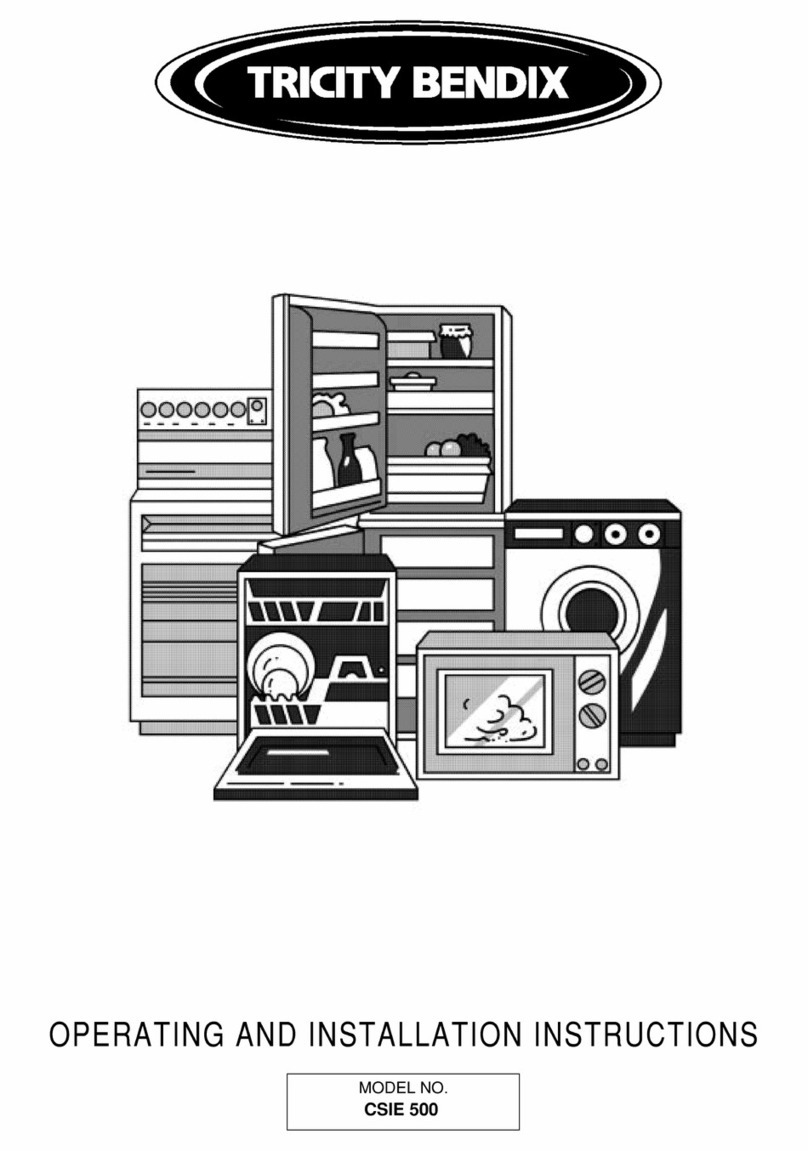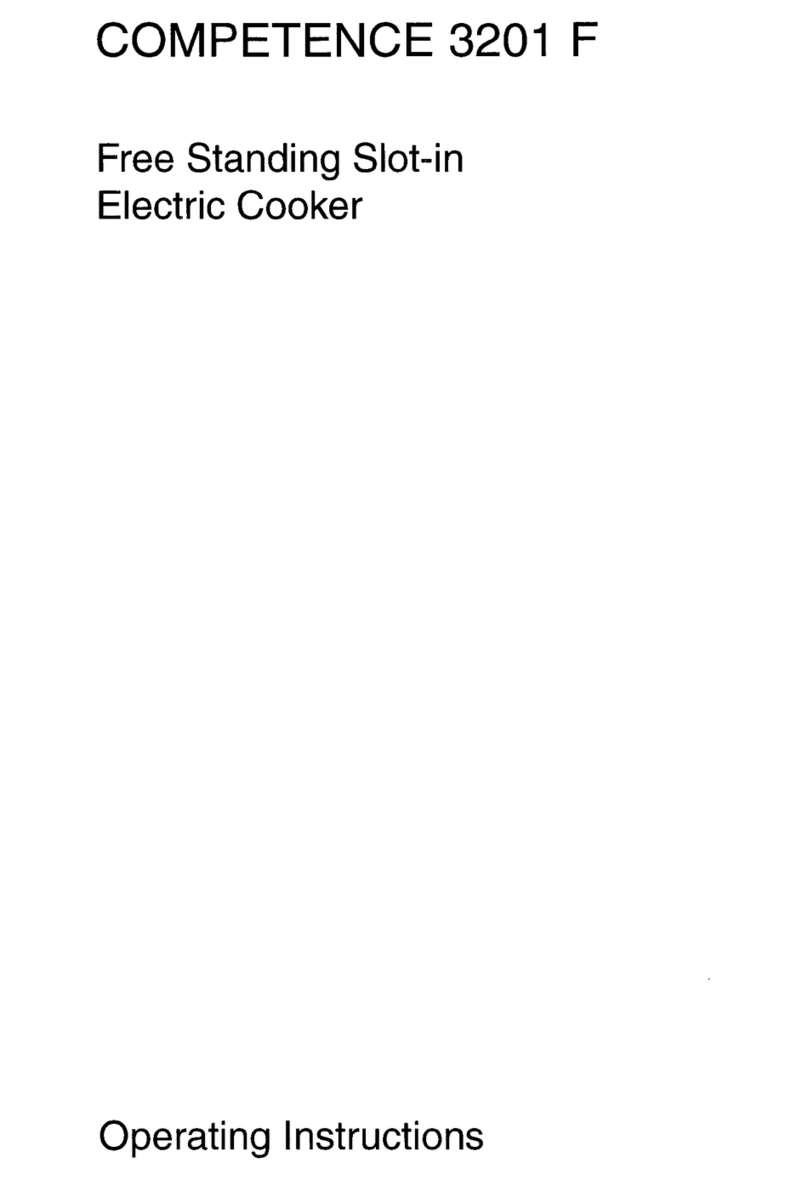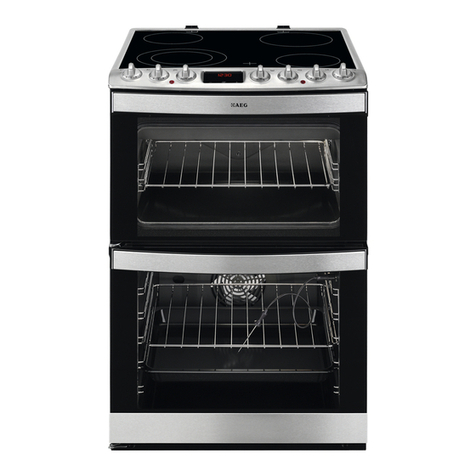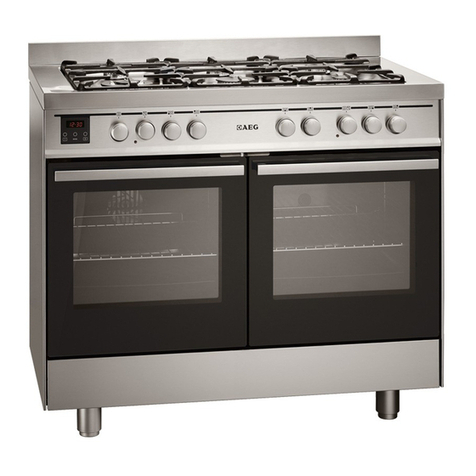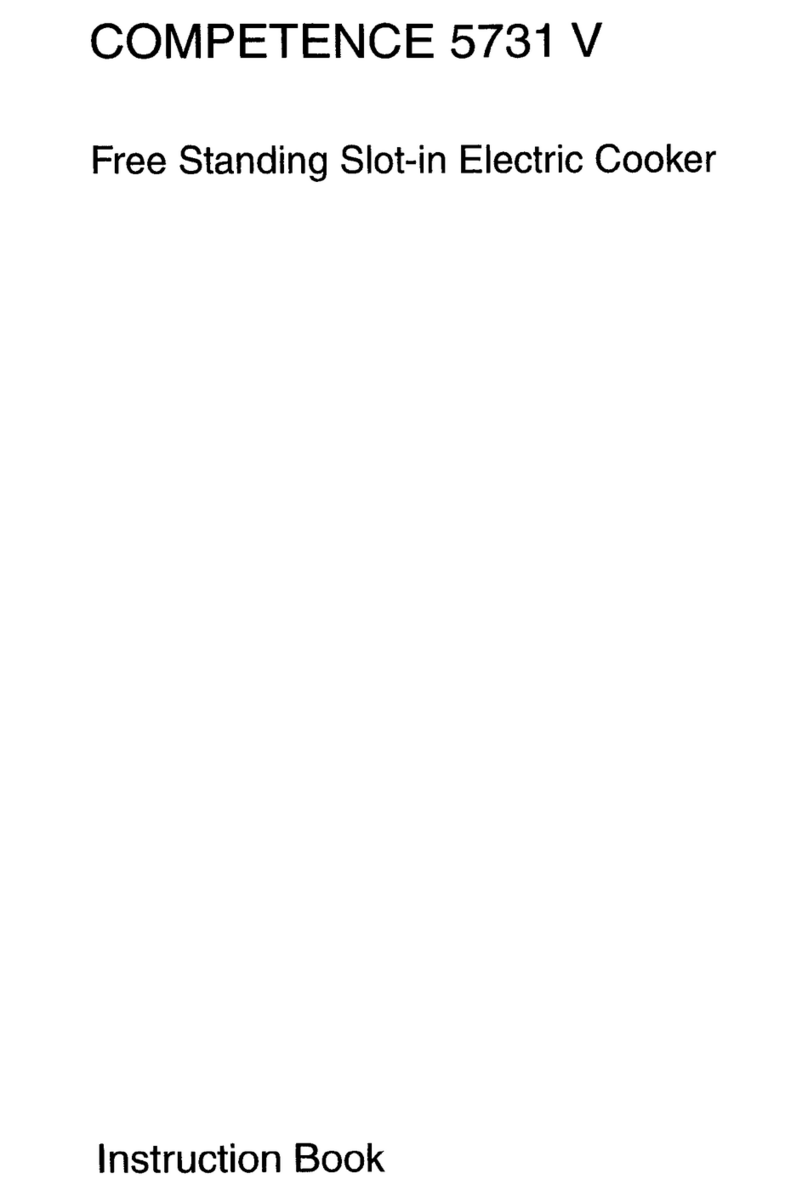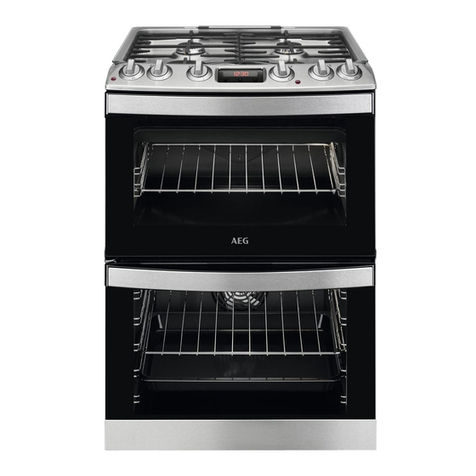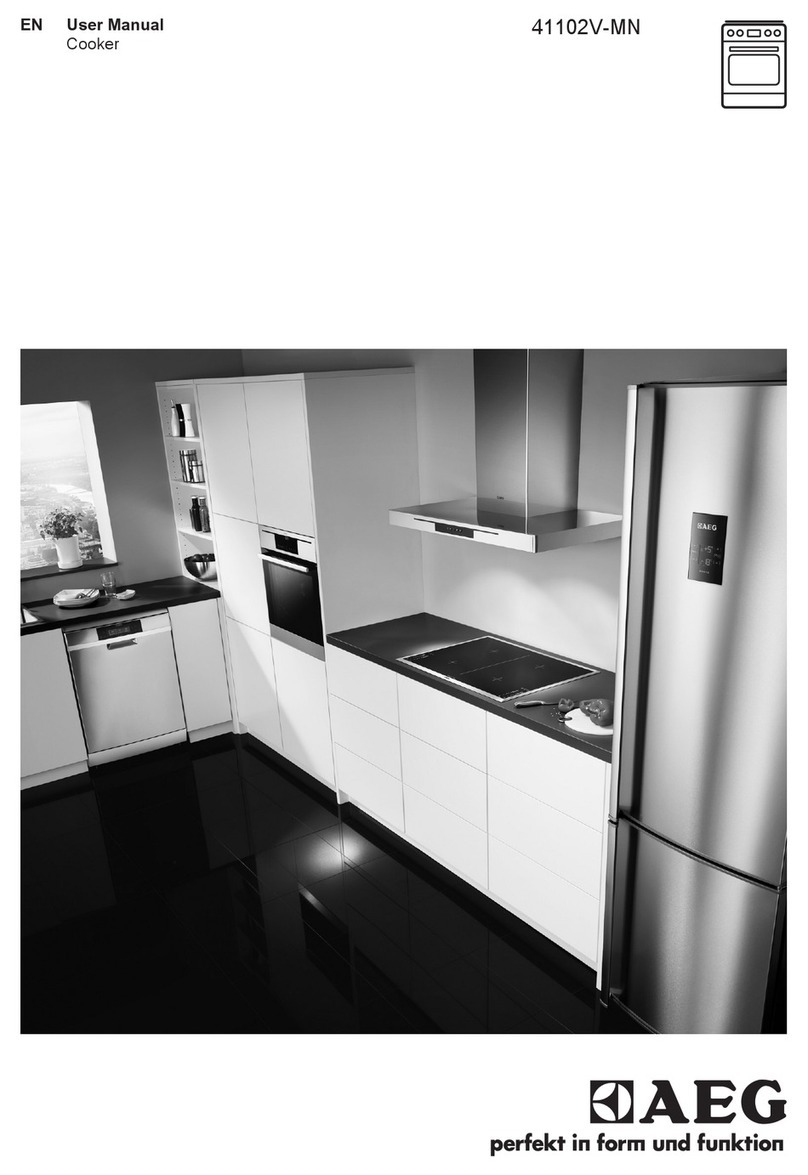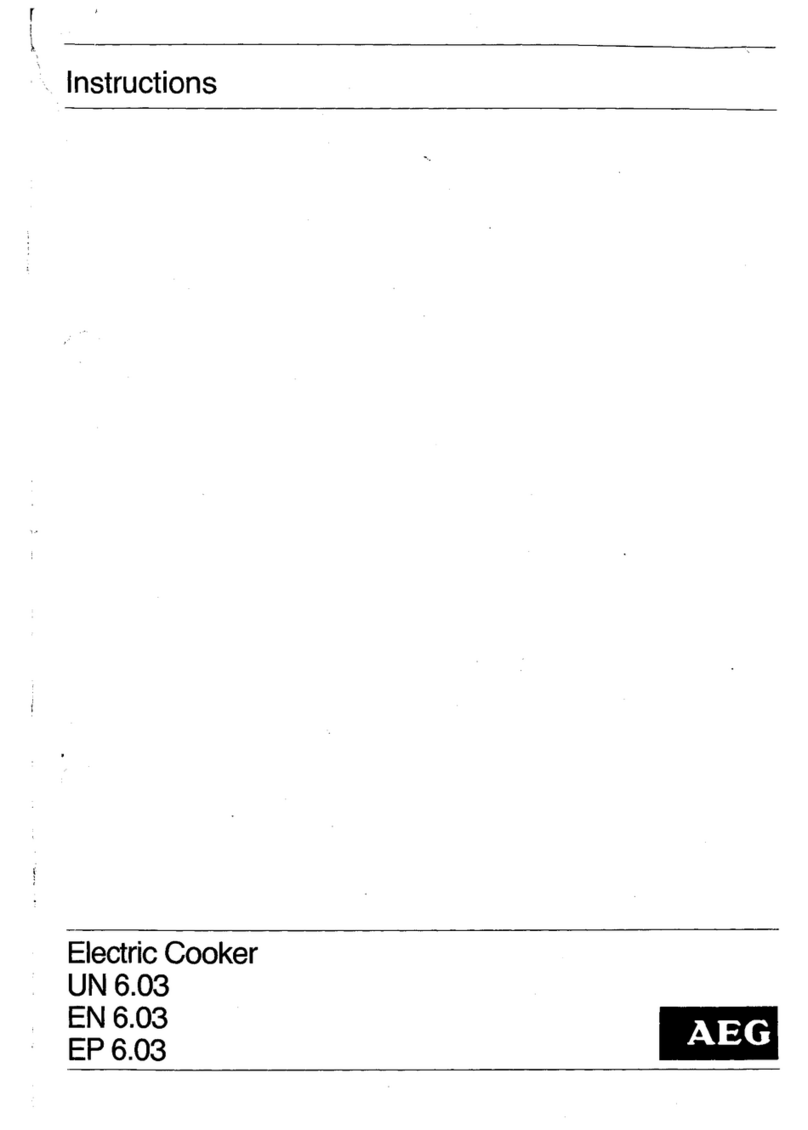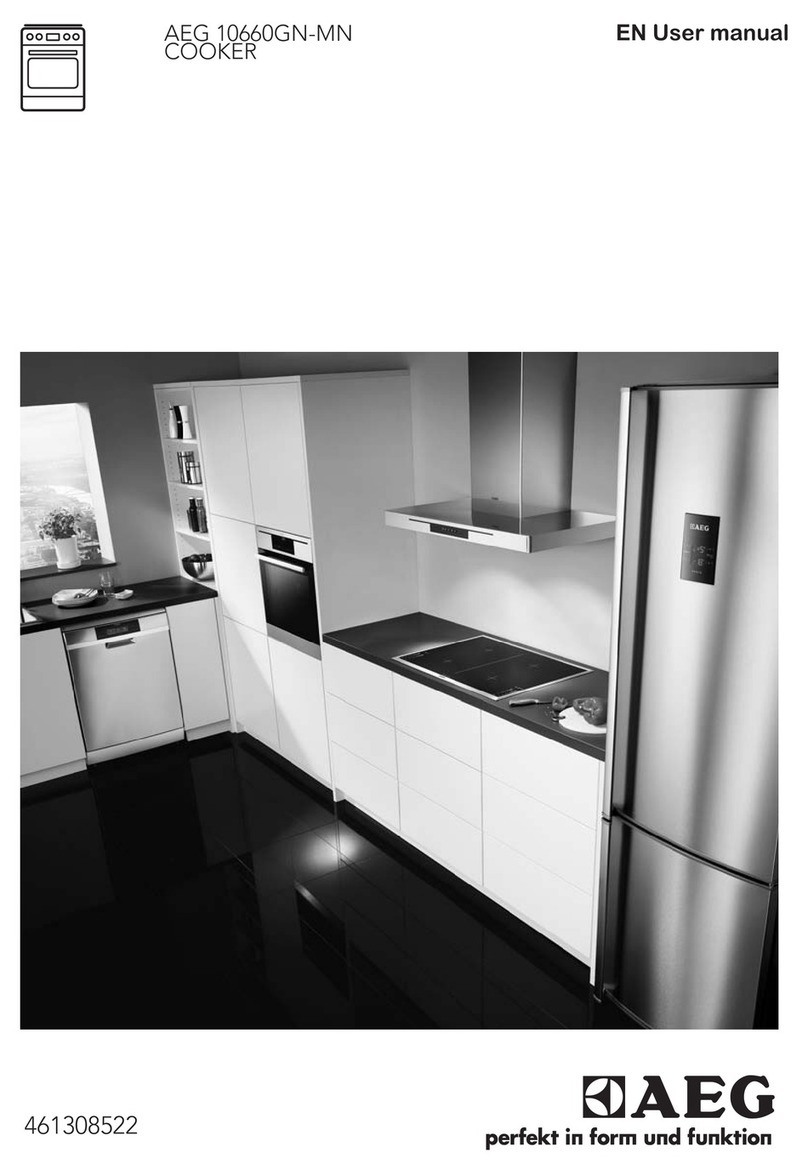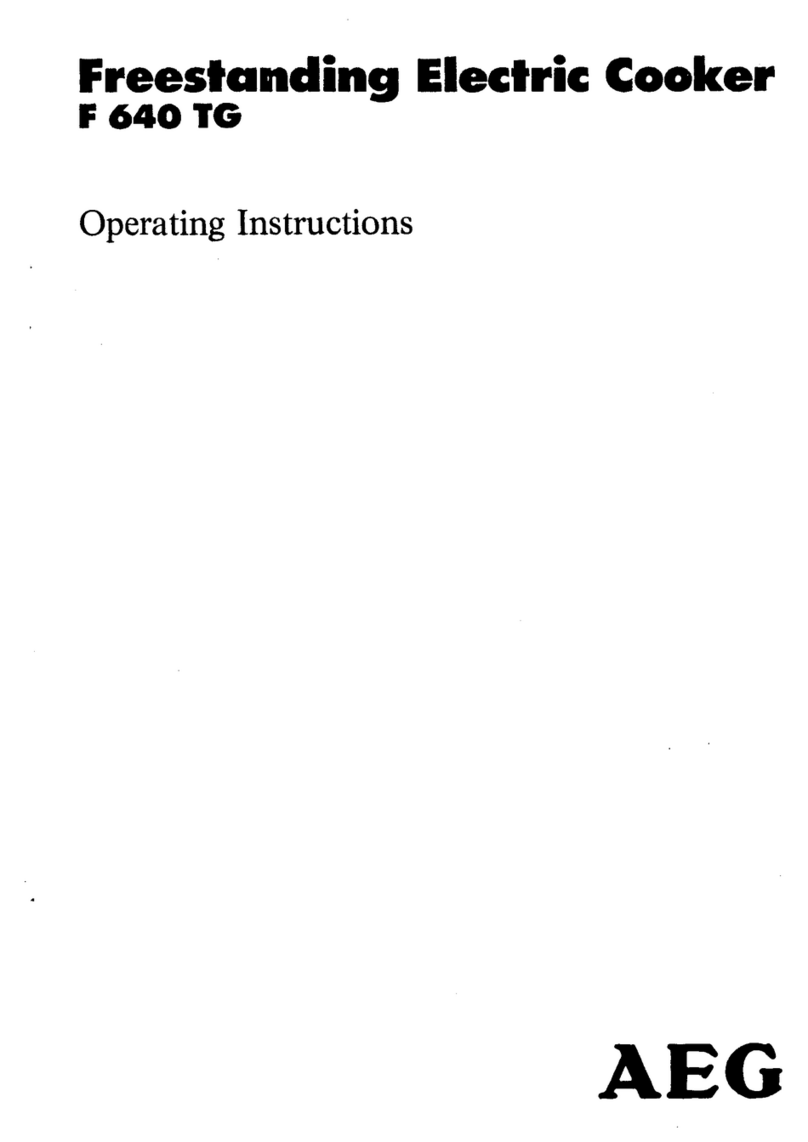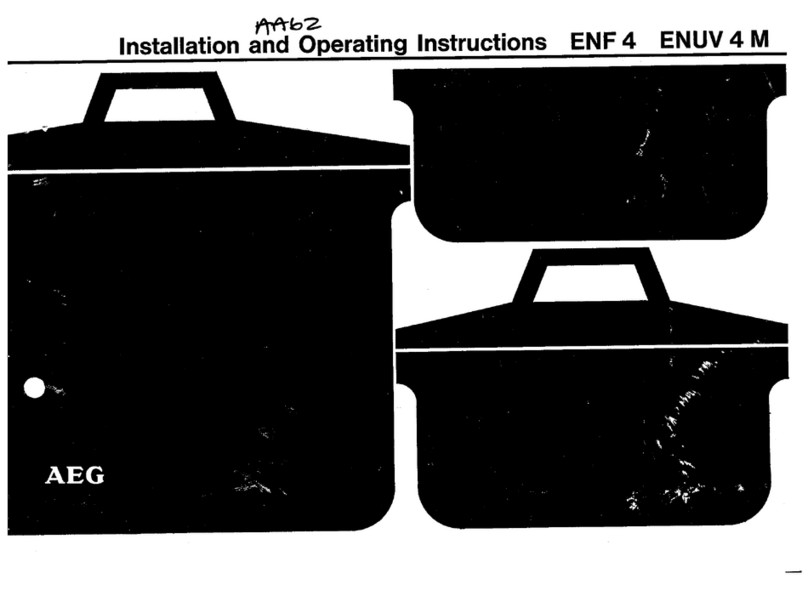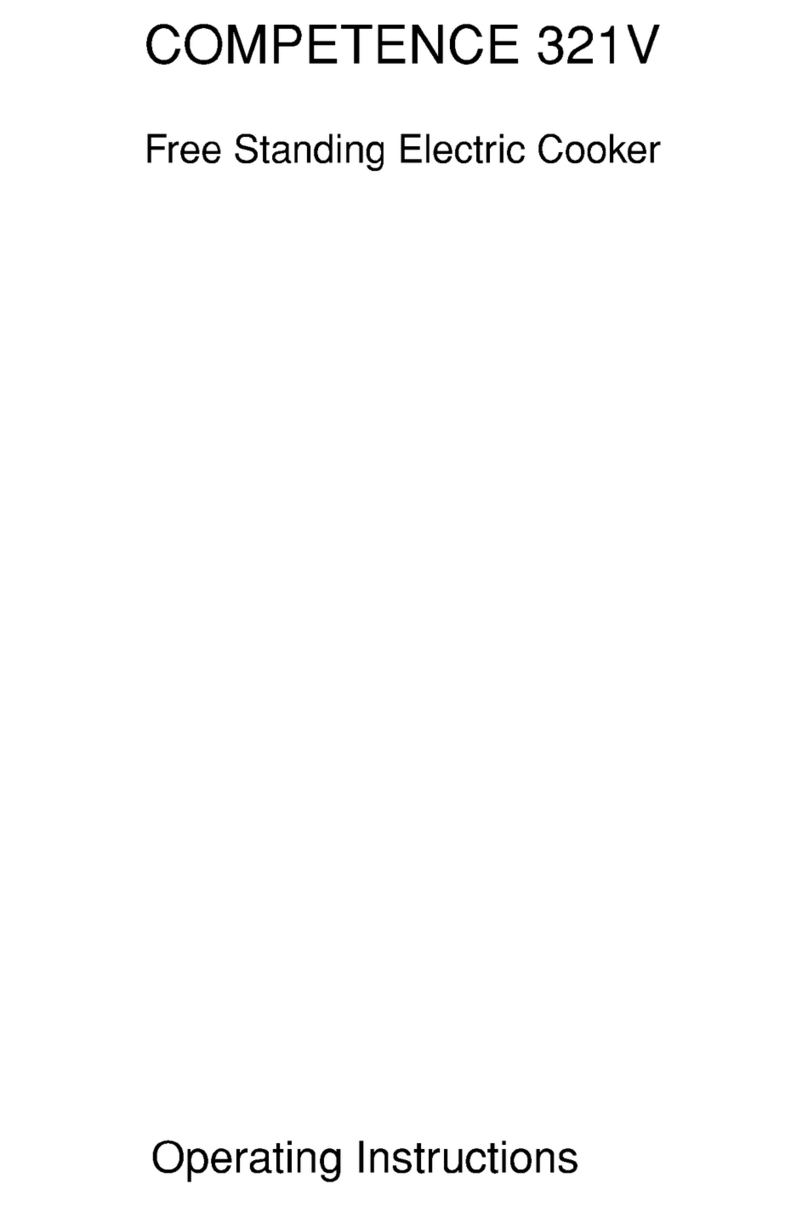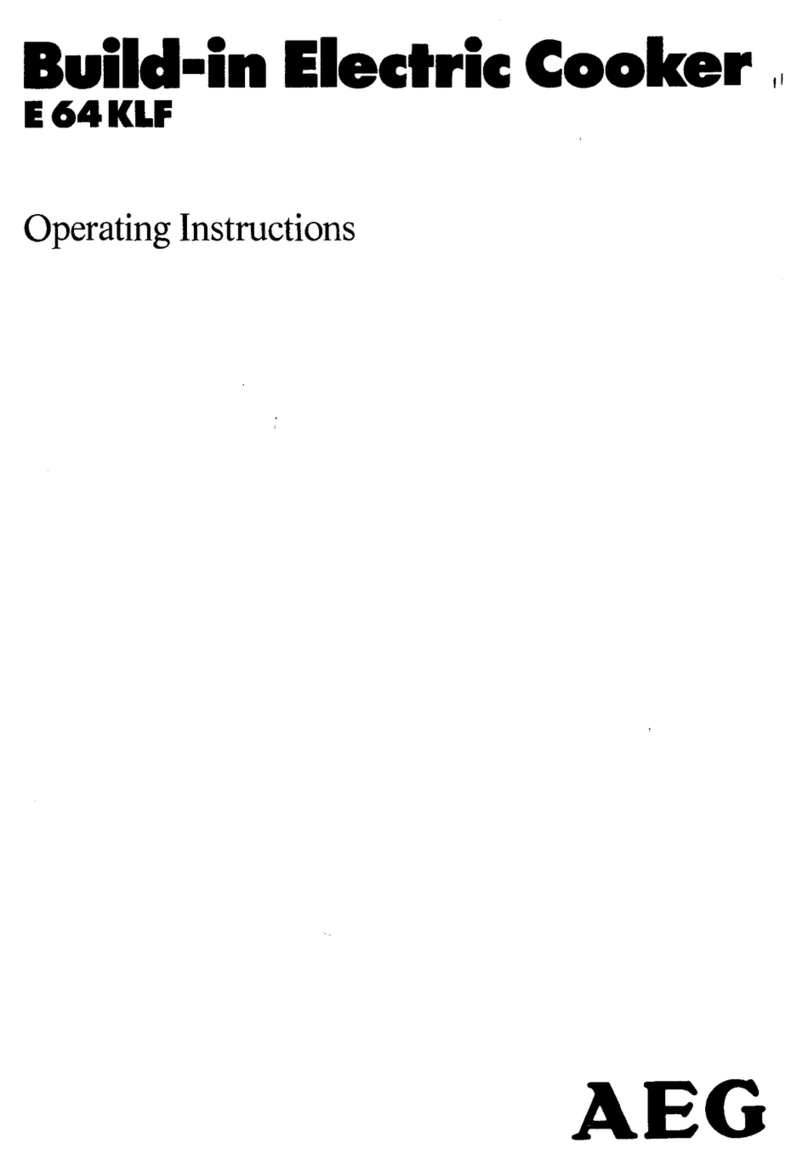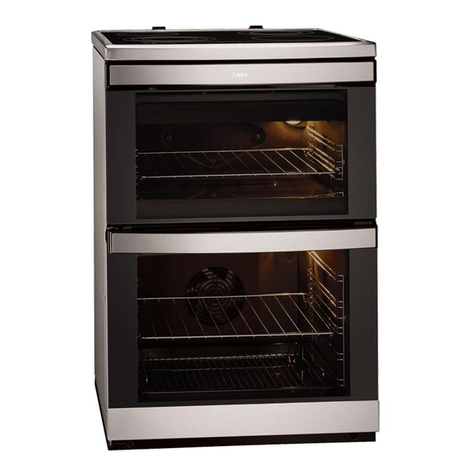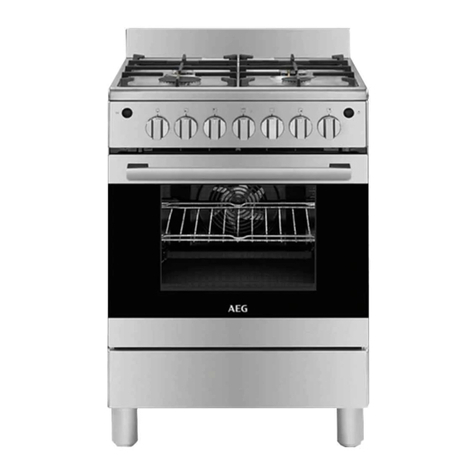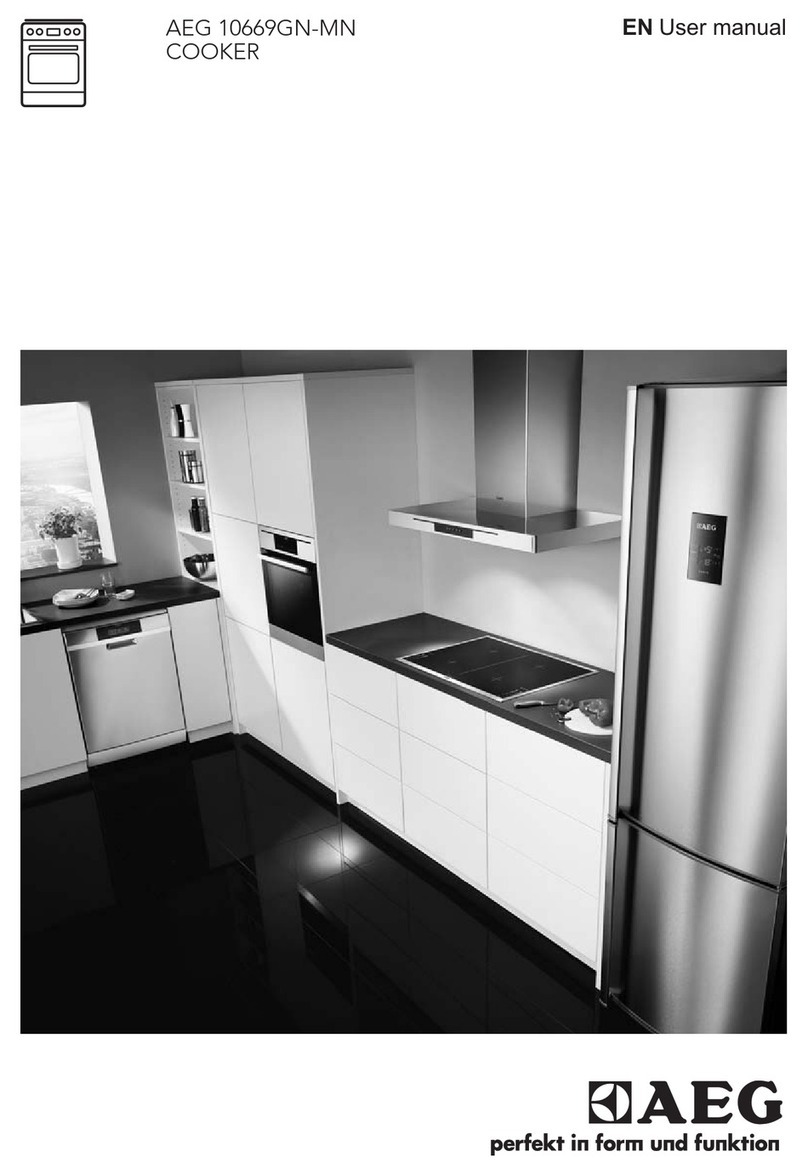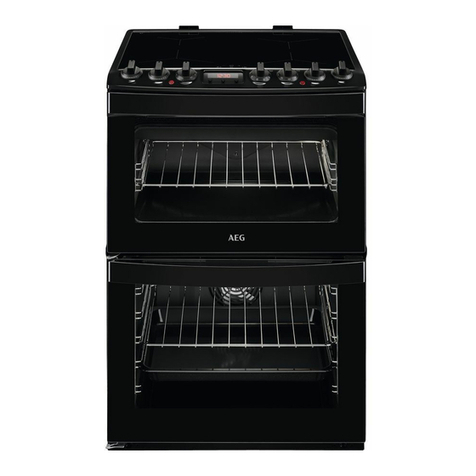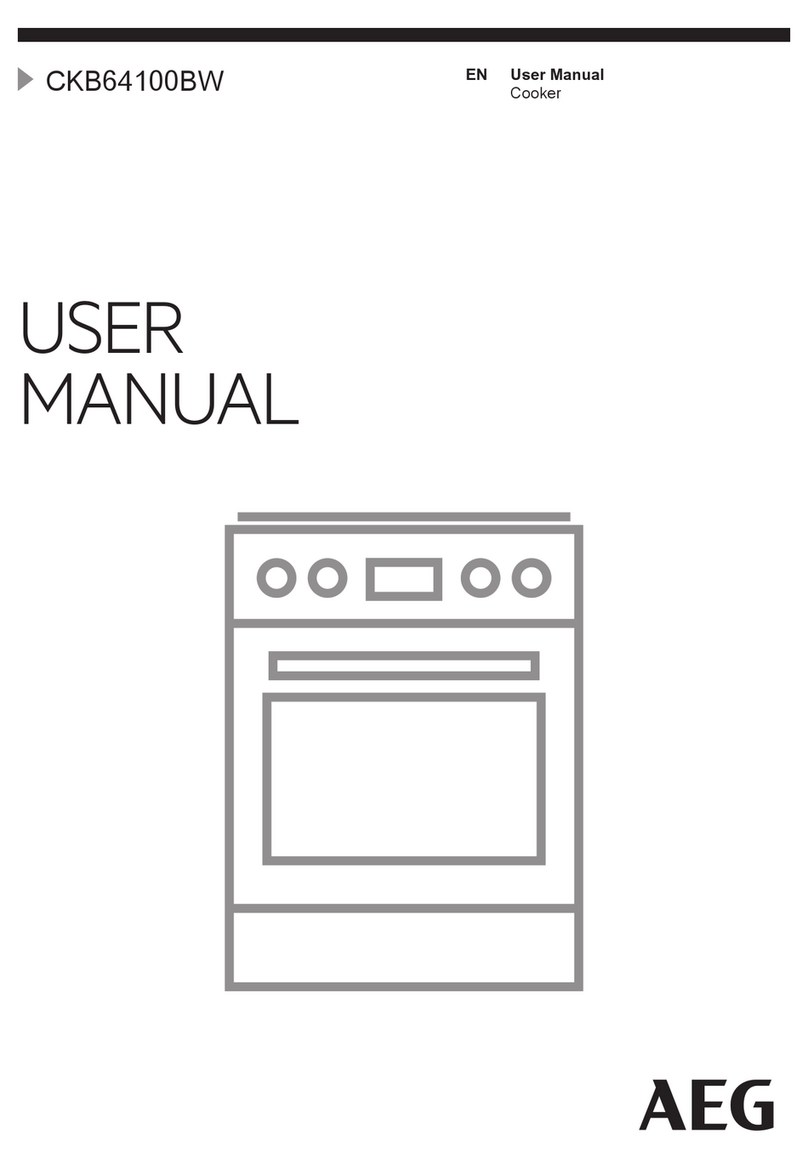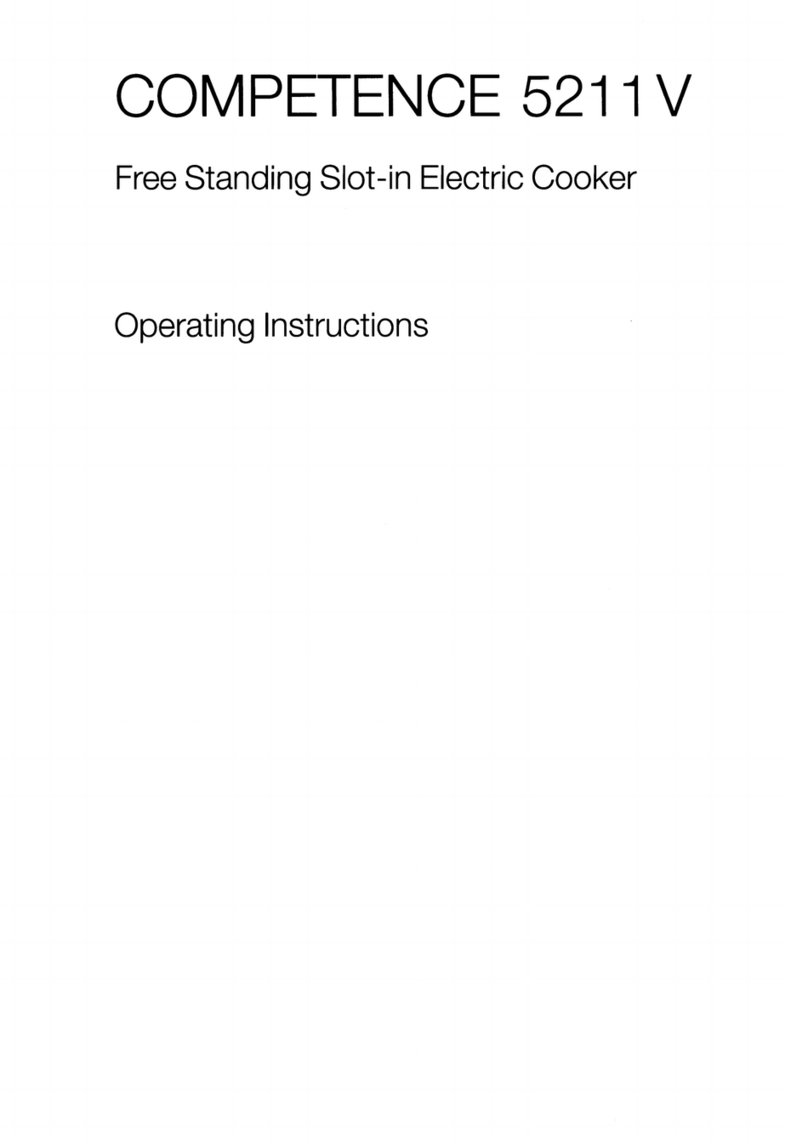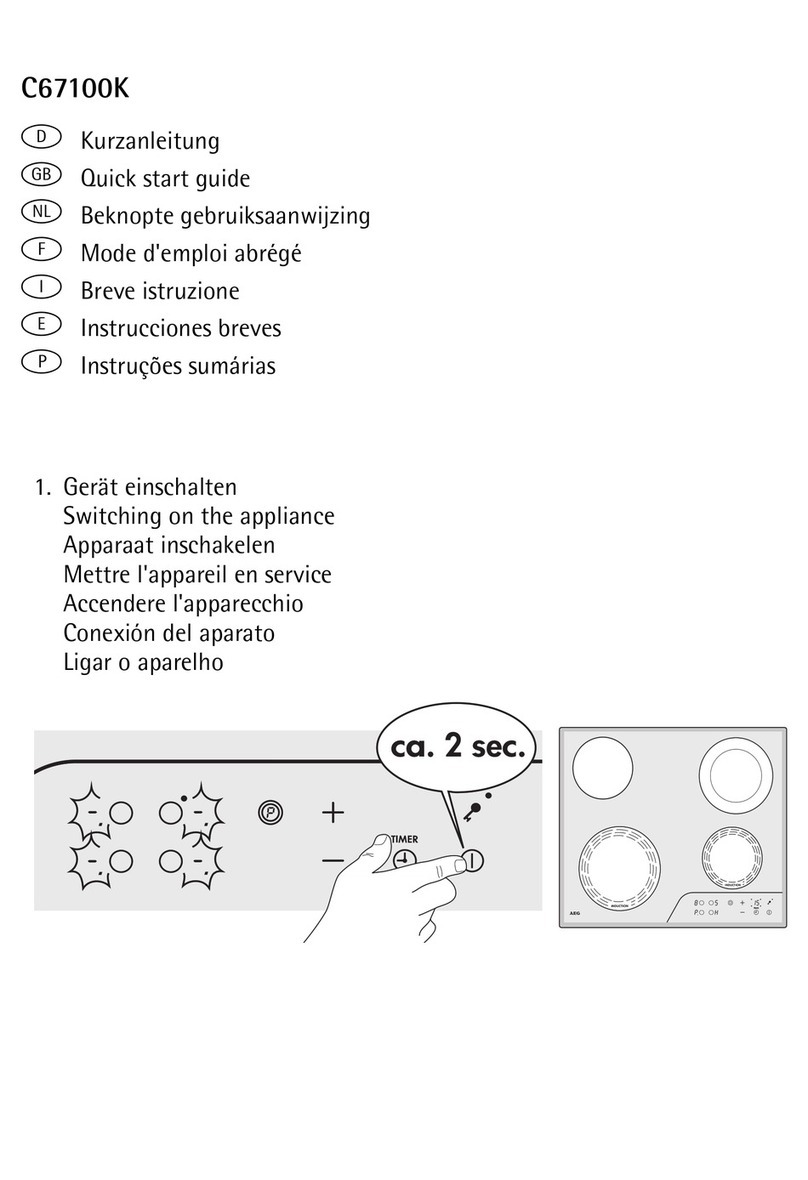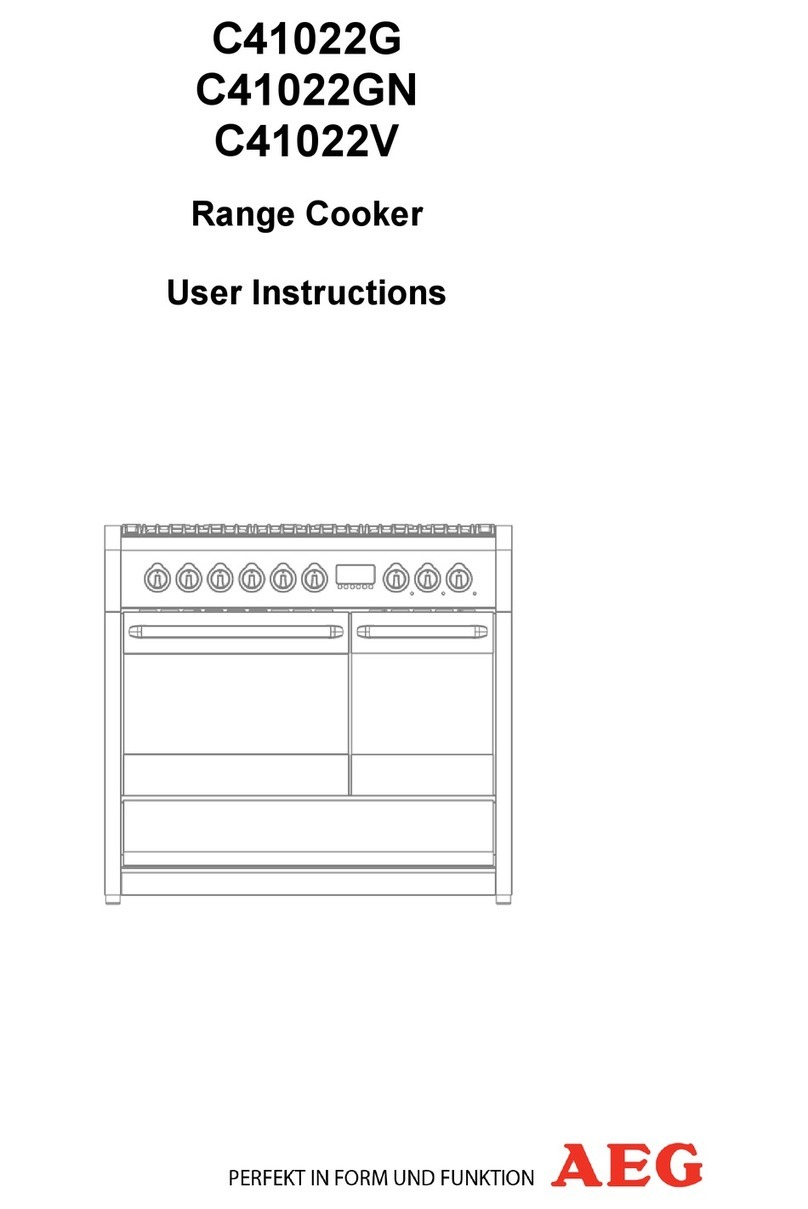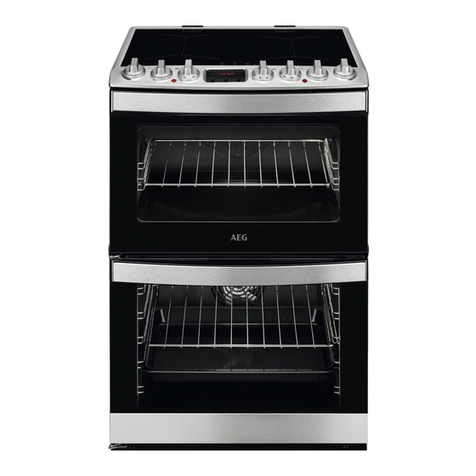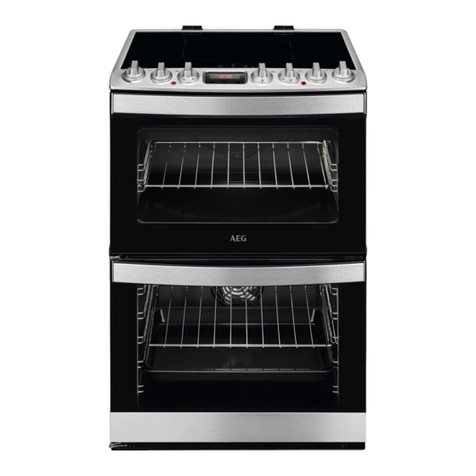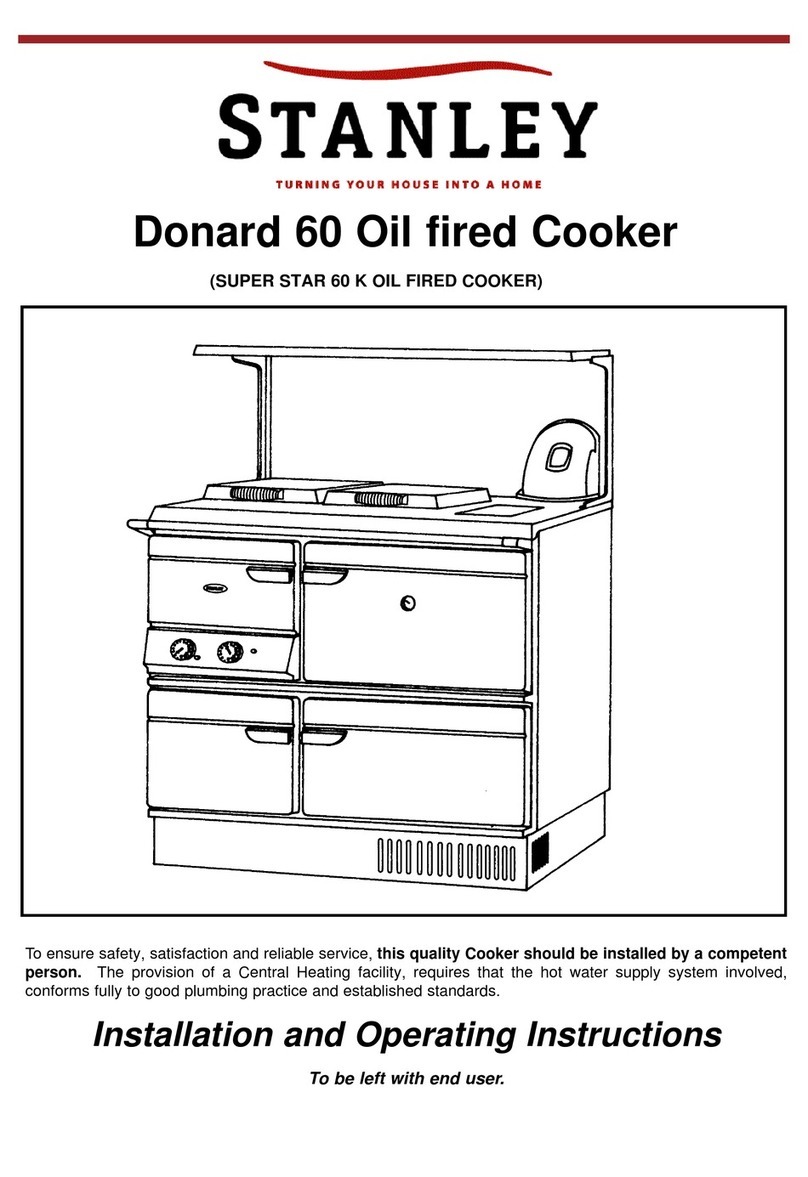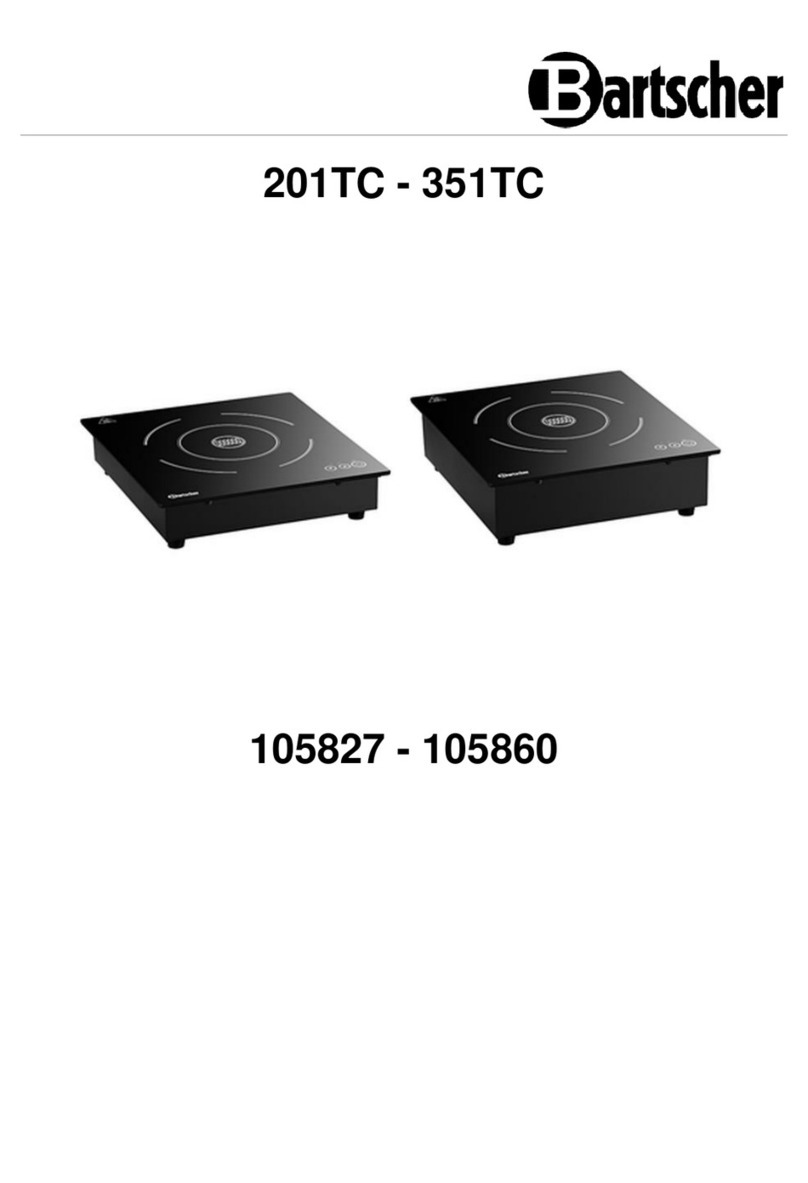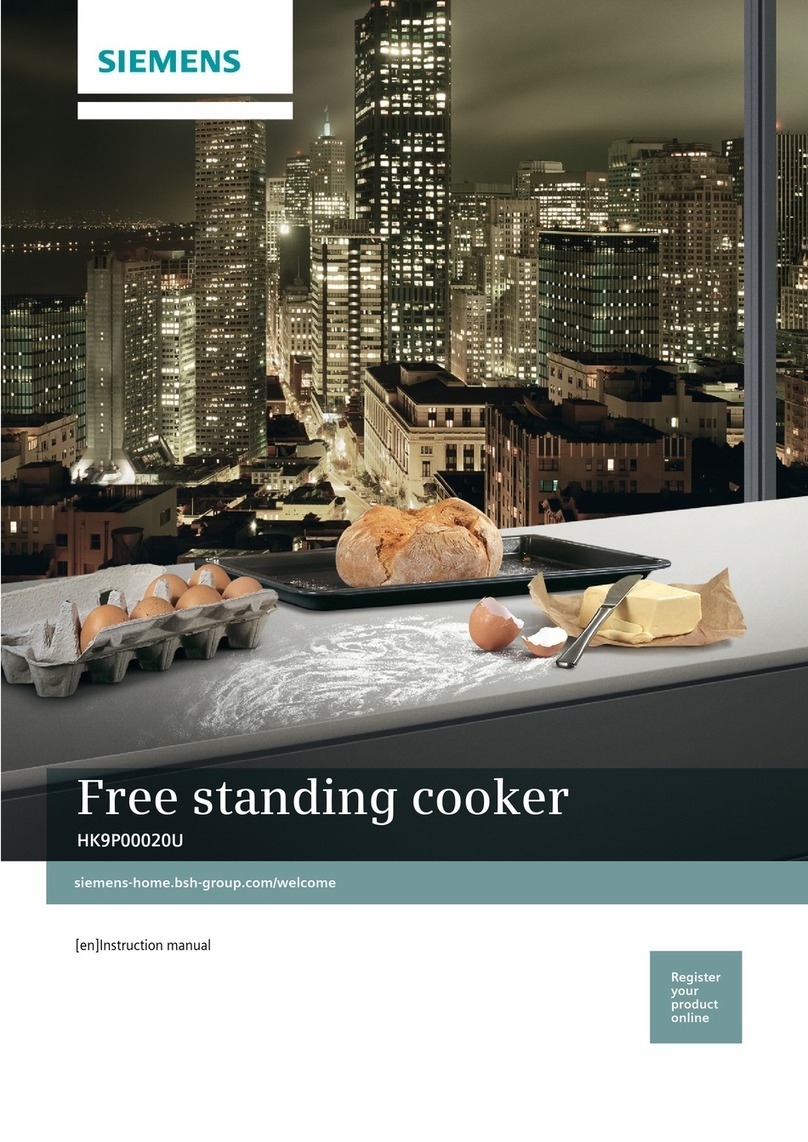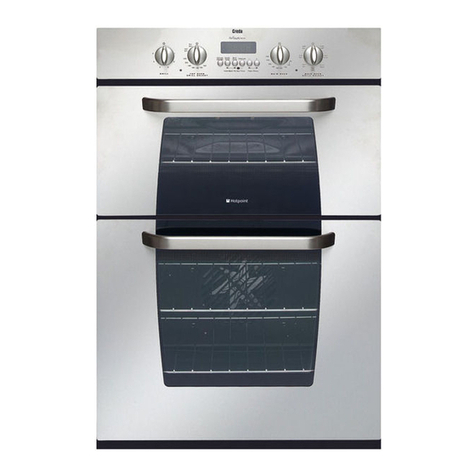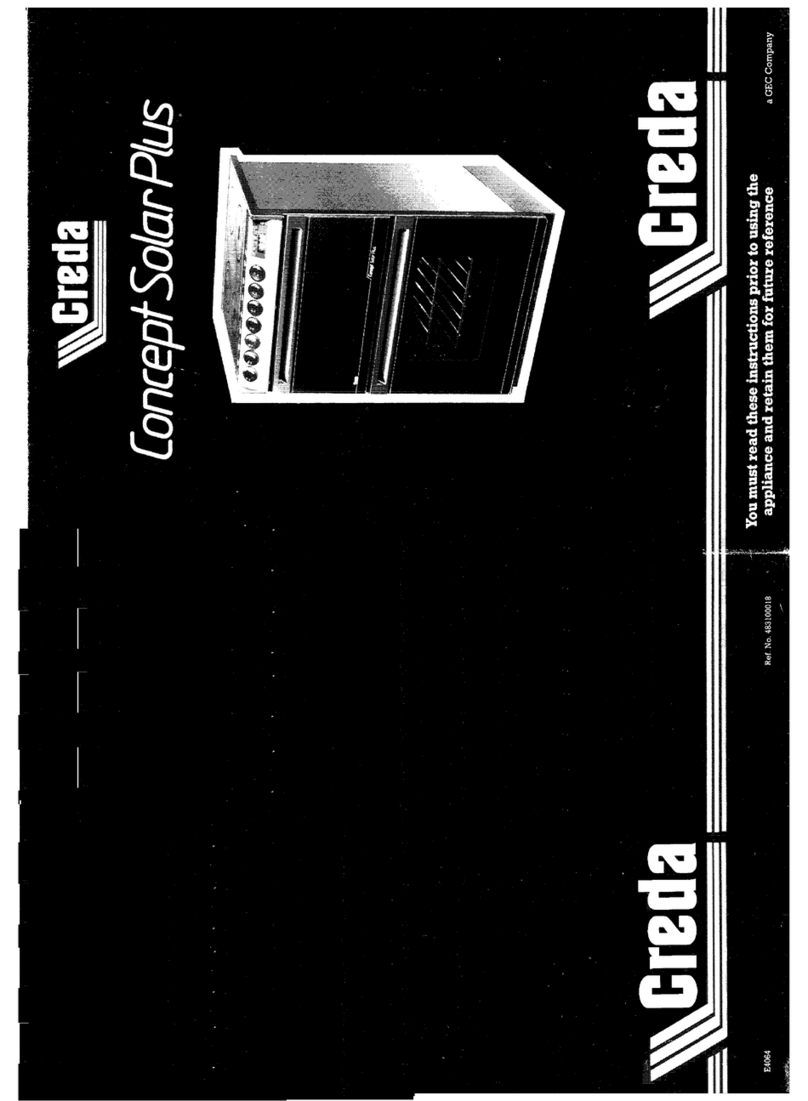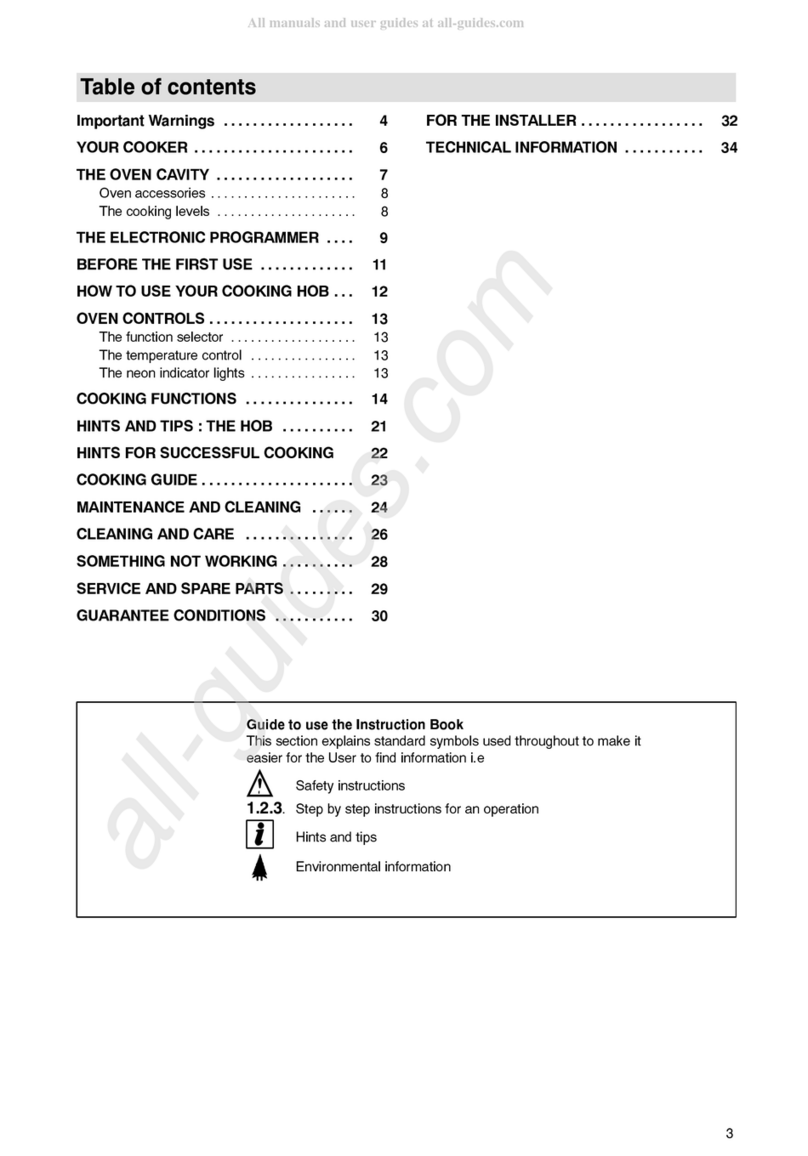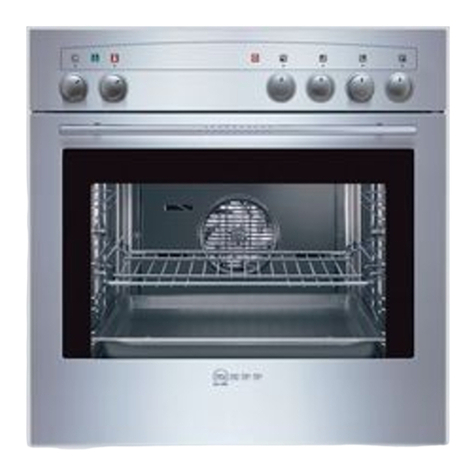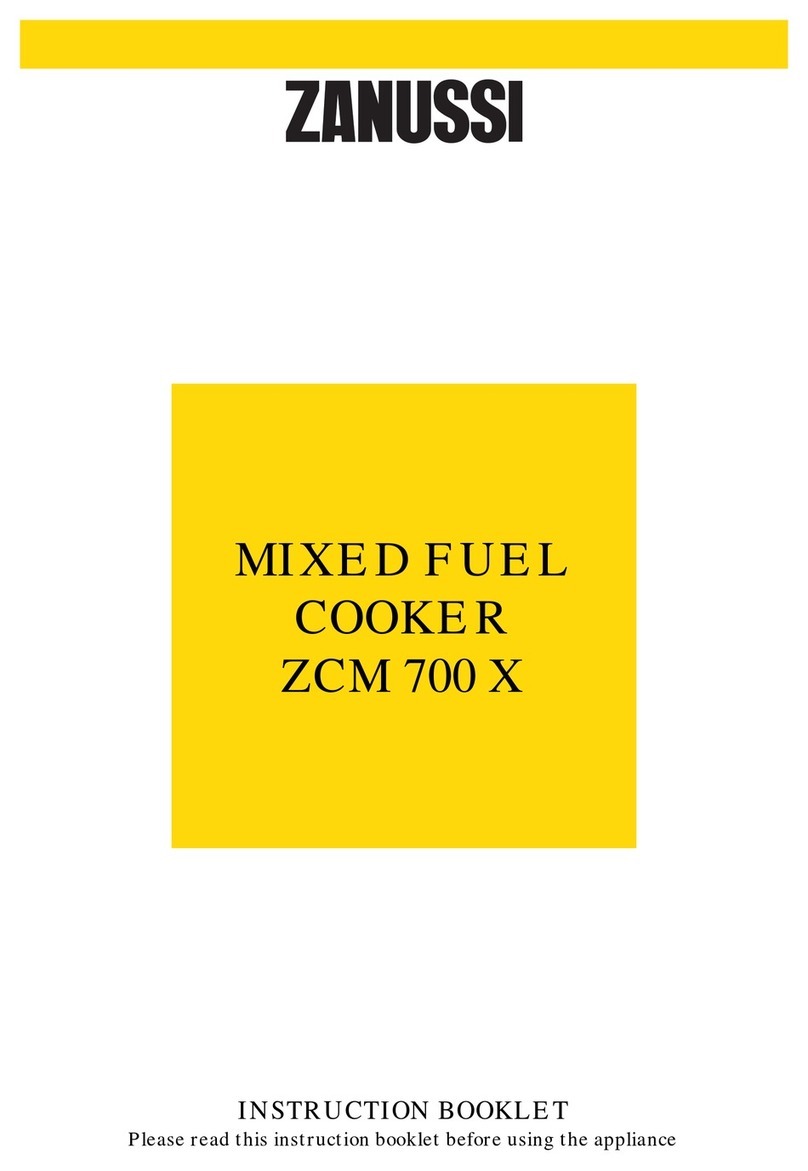• The vapours that very hot oil releases
can cause spontaneous combustion.
• Used oil, that can contain food rem-
nants, can cause fire at a lower tem-
perature than oil used for the first
time.
• Do not put flammable products or
items that are wet with flammable
products in, near or on the appliance.
• Do not let sparks or open flames to
come in contact with the appliance
when you open the door.
• Open the appliance door carefully.
The use of ingredients with alcohol
can cause a mixture of alcohol and air.
• Do not try to extinguish a fire with wa-
ter. Disconnect the appliance and cov-
er the flame with a lid or a fire blanket.
WARNING!
Risk of damage to the appliance.
• To prevent damage or discoloration to
the enamel:
– Do not put ovenware or other ob-
jects in the appliance directly on the
bottom.
– Do not put aluminium foil directly
on the bottom of the appliance.
– do not put water directly into the
hot appliance.
– do not keep moist dishes and food
in the appliance after you finish the
cooking.
– be careful when you remove or in-
stall the accessories.
• Discoloration of the enamel has no ef-
fect on the performance of the appli-
ance. It is not a defect in the sense of
the warranty law.
• Use a deep pan for moist cakes. Fruit
juices cause stains that can be perma-
nent.
• Do not keep hot cookware on the con-
trol panel.
• Do not let cookware to boil dry.
• Be careful not to let objects or cook-
ware fall on the appliance. The surface
can be damaged.
• Do not activate the cooking zones
with empty cookware or without cook-
ware.
• Do not put aluminium foil on the ap-
pliance.
• Cookware made of cast iron, alumini-
um or with a damaged bottom can
cause scratches on the glass ceramic.
Always lift these objects up when you
have to move them on the cooking
surface.
2.3 Care and Cleaning
WARNING!
Risk of injury, fire or damage to
the appliance.
• Before maintenance, deactivate the
appliance and disconnect the mains
plug from the mains socket.
• Make sure the appliance is cold. There
is the risk that the glass panels can
break.
• Replace immediately the door glass
panels when they are damaged. Con-
tact the Service.
• Be careful when you remove the door
from the appliance. The door is heavy!
• Clean regularly the appliance to pre-
vent the deterioration of the surface
material.
• Remaining fat or food in the appliance
can cause fire.
• Clean the appliance with a moist soft
cloth. Only use neutral detergents. Do
not use abrasive products, abrasive
cleaning pads, solvents or metal ob-
jects.
• If you use an oven spray, obey the
safety instructions on the packaging.
• Do not clean the catalytic enamel (if
applicable) with any kind of detergent.
2.4 Internal light
• The type of light bulb or halogen lamp
used for this appliance, is only for
household appliances. Do not use it
for house lighting.
WARNING!
Risk of electrical shock.
• Before replacing the lamp, disconnect
the appliance from the power supply.
• Only use lamps with the same specifi-
cations.
6www.aeg.com



